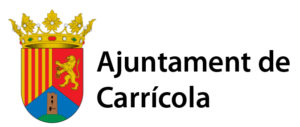Circular economy and biodiversity in constructed wetlands
- Home
- Our Projects
- Circular economy and biodiversity in constructed wetlands
- General information
- Partners
- Contact

The setting up of artificial wetlands through sewage treatment plant (EDAR) in small towns is a measure that may improve the quality of waters and may help to fulfill the objectives gathered in the Water Framework Directive.
What we are intending to do with the project LIFE Renaturwat is to ameliorate the environmental quality of the urban residual waters through sustainable treatments. Although works on a pilot and laboratory scale have been happening for a while, we want to go a step further and start to work on a demonstrative scale of artificial humidity through this project.
In this case, and as an innovation, artificial humidity uses as an absorbent material the mud that emerges from the process of water purification. In this way, a residue that will be wasted will be reused taking into account its capacities in another stage of the urban water cycle transforming thus residues into resources.
The demonstrative project is performed at the sewage treatment plant in the municipality of Carrícola and at the “Valle Residencial Los Monasterios” housing estate, where two smalls surface-flow wetlands will be built as small lagoons. They will improve the biodiversity of the treated waters before its final pouring.













